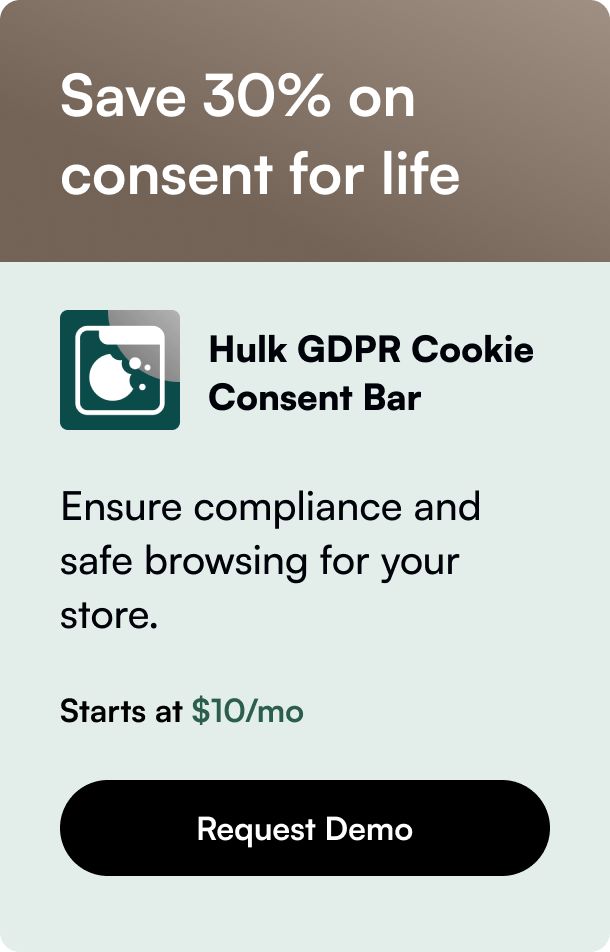Table of Contents
- Introduction
- Why Facebook Meta Tags Matter for Your Shopify Store
- Step-by-Step Guide to Adding Facebook Meta Tag in Shopify
- Conclusion
- FAQ Section
Introduction
Are you looking to enhance your Shopify store’s presence on social media, or perhaps you’re gearing up for some precise advertising on Facebook? One critical step that you might not have considered yet is adding a Facebook Meta Tag to your Shopify store. This seemingly small step can have a significant impact on how effectively you can manage and deploy your Facebook ads, verify your domain with Facebook, and improve overall brand visibility across the social media landscape.
In this comprehensive guide, we will walk through why adding a Facebook Meta Tag to your Shopify store is essential, the benefits it offers, and a step-by-step process on how you can add it. By the end of this post, you'll not only understand the importance of a Facebook Meta Tag but also how seamlessly you can implement it into your Shopify store, even if you’re not tech-savvy.
So, why is this guide unique or valuable? Unlike other explanations that might gloss over the details or seem too technical, this guide aims to provide clarity, actionable steps, and useful tips that ensure you’re well-equipped to optimize your Shopify store for Facebook effectively.
Why Facebook Meta Tags Matter for Your Shopify Store
Before we dive into the "how," let's discuss the "why." Facebook Meta Tags play a crucial role in asserting the ownership of your domain to Facebook. This verification process is vital for a few reasons:
- Brand Safety and Authenticity: It establishes your brand’s authenticity and rights over the content and ads you wish to display on Facebook.
- Better Ad Delivery: By verifying your domain, you can manage editing permissions more securely, ensuring that your ads reach the right audience without being misused or altered.
- Optimized Social Presence: Meta tags allow for richer social snippets when your store’s links are shared, enhancing click-through rates and engagement from your target audience.
Understanding these benefits highlights the importance of adding a Facebook Meta Tag to your Shopify store. Now, let's navigate through the actual process.
Step-by-Step Guide to Adding Facebook Meta Tag in Shopify
Adding a Facebook Meta Tag to your Shopify store involves a few clear cut steps, detailed below:
Step 1: Navigate to Facebook Business Manager
First, head over to your Facebook Business Manager. Go to the 'Brand Safety' section, choose 'Domains,' and then click on 'Add.' Enter your domain name in the provided field.
Step 2: Choose the Meta-tag Verification Method
You will be presented with three verification options: DNS Verification, HTML File Upload, and Meta-tag Verification. For Shopify store owners, the Meta-tag Verification is the most straightforward method. Once you select it, Facebook will generate a meta-tag specific to your domain.
Step 3: Access Your Shopify Admin Dashboard
Log in to your Shopify store and navigate to the 'Online Store' under 'Sales Channels.' Then, go to 'Themes,' find your active theme, and click on 'Actions' > 'Edit code.'
Step 4: Insert the Meta-tag in Your Shopify Store
Find the 'theme.liquid' file within the 'Layout' section. Paste the meta-tag you copied from Facebook just below the opening <head> tag. Be attentive not to alter any existing code. Save your changes once done.
Step 5: Verify Your Domain on Facebook
Return to your Facebook Business Manager and complete the domain verification by following the prompts. It might take a few minutes to a few hours for the verification to be recognized.
Step 6: Double-check and Test
After verification, it’s wise to check if everything is set up correctly by sharing a link to your store on Facebook and seeing how it appears.
Additional Tips
- Keep the Meta Tag Intact: Even after verification, don’t remove the meta-tag. Facebook might re-check the verification status in the future.
- Consistency Is Key: Ensure that the domain used for verification is consistent across all your marketing materials and Facebook ad campaigns.
Conclusion
Adding a Facebook Meta Tag to your Shopify store is not just a technical necessity but a strategic move to amplify your social media marketing efforts. By following the detailed steps outlined in this guide, you can ensure that your domain is verified with Facebook, bolstering your advertising capabilities and branding presence on one of the world’s largest social platforms.
Remember, in the digital marketing world, it’s these small tweaks and optimizations that can lead to significant improvements in your overall online presence and performance. Adding a Facebook Meta Tag to Shopify is a piece of that puzzle. Get started today, and see the difference it makes for your store!
FAQ Section
Q1: How often do I need to verify my domain with Facebook? Your domain only needs to be verified once, but ensure the meta-tag remains in your Shopify store’s code as Facebook may re-check.
Q2: Can I verify multiple domains for a single Facebook Business Manager? Yes, you can add and verify multiple domains in your Facebook Business Manager account.
Q3: What should I do if my domain verification fails? Re-check the meta-tag placement in your Shopify code. If issues persist, contact Facebook Support for assistance.
Q4: Will adding a Facebook Meta Tag affect my store’s loading speed? No, adding a meta-tag is a lightweight change that should not impact your Shopify store’s loading speed.
Q5: Can I remove the meta-tag after verification? It's advised to keep the meta-tag in place even after verification to avoid potential issues with Facebook re-checking the domain's authenticity.








